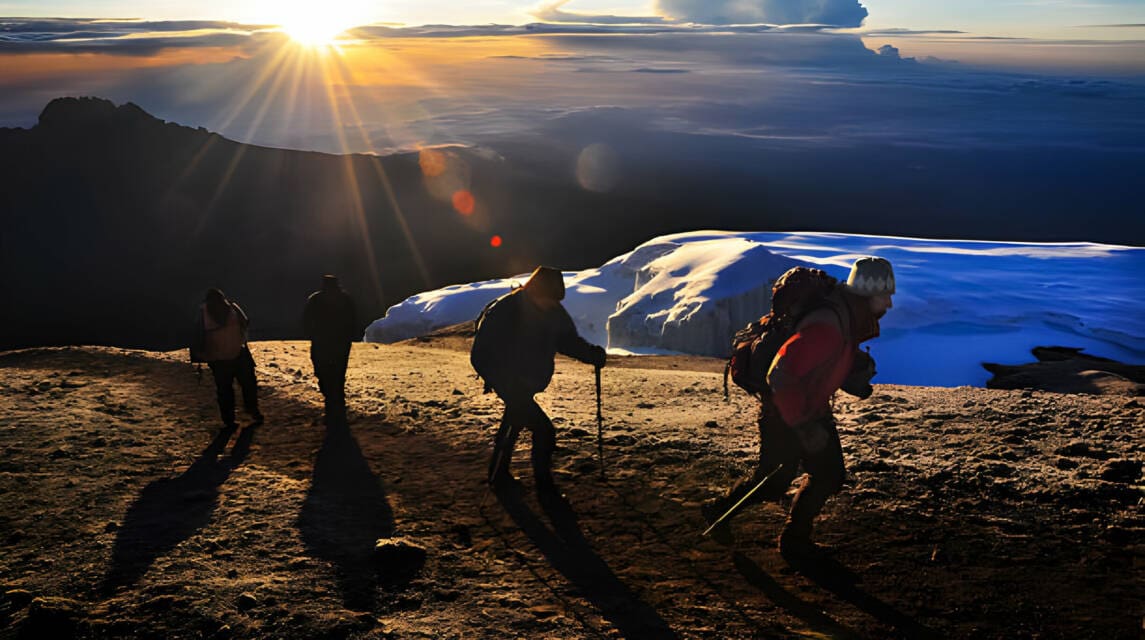Understanding the Importance of Acclimatization on Kilimanjaro
Acclimatization on Kilimanjaro is a crucial aspect of any successful climb on Kilimanjaro. As the highest peak in Africa, reaching an elevation of 5,895 meters (19,341 feet), Kilimanjaro poses significant challenges due to its high altitude. Acclimatization refers to the process of adapting to the reduced oxygen levels and atmospheric pressure found at higher altitudes. It is essential to allow your body time to adjust to these extreme conditions to avoid altitude sickness and ensure a safe and enjoyable climb.
Proper acclimatization is vital because, as you ascend higher on Kilimanjaro, the air becomes thinner, resulting in lower oxygen levels. This can lead to a range of symptoms, including headaches, nausea, dizziness, and fatigue. Ignoring the importance of acclimatization can not only hinder your progress but also put your health at risk. By understanding and prioritizing acclimatization, you can increase your chances of successfully conquering the challenges of high altitude on Kilimanjaro.
The Challenges of High Altitude on Kilimanjaro
The higher you climb on Kilimanjaro, the lower the oxygen levels become, making it increasingly difficult for your body to function optimally. This lack of oxygen can have a profound impact on your physical and mental well-being. As you ascend, the air pressure decreases, which can cause the air in your lungs to expand. This expansion can lead to discomfort, shortness of breath, and difficulty in breathing. Additionally, the reduced oxygen levels can cause your heart rate to increase, putting additional strain on your cardiovascular system.
Altitude sickness, also known as acute mountain sickness (AMS), is a common challenge faced by climbers on Kilimanjaro. AMS can manifest in various forms, ranging from mild symptoms such as headaches and nausea to more severe conditions like high-altitude cerebral edema (HACE) and high-altitude pulmonary edema (HAPE). These conditions can be life-threatening if they are not treated promptly. Therefore, understanding the challenges of high altitude and the importance of acclimatization is crucial for a successful ascent of Kilimanjaro.
The Acclimatization Process
The acclimatization process on Kilimanjaro involves gradually exposing your body to higher altitudes, allowing it to adapt to the reduced oxygen levels. This process typically involves the ascent and descent technique, where climbers climb to higher altitudes during the day and return to lower altitudes to sleep. This helps stimulate the body’s natural adaptation mechanisms and allows it to adjust to the changing conditions.
During the acclimatization on Kilimanjaro process, it is essential to listen to your body and pay attention to any signs of altitude sickness. This includes monitoring your heart rate, breathing, and overall physical and mental well-being. If you experience any symptoms of altitude sickness, it is crucial to communicate with your guide or fellow climbers and take appropriate measures to ensure your safety and well-being.
Preparing for Acclimatization on Kilimanjaro
Proper preparation is key to a successful acclimatization process on Kilimanjaro. Before embarking on your climb, it is recommended to engage in regular physical exercise to improve your cardiovascular fitness and endurance. This will help your body cope with the physical demands of climbing at high altitudes.
In addition to physical preparation, it is essential to pack appropriate clothing and equipment for the varying weather conditions on Kilimanjaro. Layering your clothing is crucial to regulate your body temperature and protect yourself from the cold temperatures encountered at higher altitudes. It is also important to stay hydrated throughout the climb, as dehydration can exacerbate the symptoms of altitude sickness.

Tips for Successful Acclimatization on Kilimanjaro
Gradual Ascent: It is crucial to choose a climbing route that allows for a gradual ascent, giving your body ample time to acclimatize. The longer the climb, the better your chances of successfully adapting to the high altitude.
Slow and Steady Pace: Climbing at a slow and steady pace helps minimize the strain on your body and allows for better acclimatization on Kilimanjaro. Avoid rushing, and take regular breaks to rest and hydrate.
Proper Hydration and Nutrition: Staying hydrated and well-nourished is essential for optimal acclimatization on Kilimanjaro. Drink plenty of water and consume a balanced diet, including carbohydrates and proteins, to fuel your body.
Regular Monitoring: Keep track of your vital signs, such as heart rate and oxygen saturation levels, to monitor your body’s response to the altitude. This can help identify any potential issues and allow for timely intervention.
Listen to your body: Pay attention to any symptoms of altitude sickness, and communicate with your guide or fellow climbers. If necessary, be prepared to adjust your ascent or descend to a lower altitude to ensure your safety.
Common Symptoms of Altitude Sickness and How to Manage Them
Altitude sickness can manifest in various ways, and it is important to be familiar with the common symptoms and know how to manage them. Some of the most common symptoms include headaches, nausea, dizziness, fatigue, shortness of breath, and loss of appetite.
To manage these symptoms, it is recommended to rest, hydrate, and take medication if necessary. Over-the-counter pain relievers can help alleviate headaches, while anti-nausea medication can help with nausea and vomiting. However, it is essential to consult with your doctor or a medical professional before taking any medication, especially at high altitudes.
Recommended Acclimatization Practices on Kilimanjaro
Several Acclimatization on Kilimanjaro can enhance your chances of a successful climb on Kilimanjaro. These include:
Climbing High, Sleeping Low: As mentioned earlier, the ascent and descent technique is crucial for effective acclimatization. Climbing to higher altitudes during the day and descending to sleep at lower altitudes helps stimulate your body’s adaptation mechanisms.
Acclimatization Days: Many climbing routes on Kilimanjaro include designated acclimatization days. These are rest days where climbers stay at the same camp to allow their bodies to adjust to the altitude. It is important to utilize these days wisely by resting, hydrating, and engaging in light physical activity.
Multiple Summits: Some climbing routes on Kilimanjaro offer the opportunity to reach multiple summits before the final ascent to Uhuru Peak. These additional summits provide additional acclimatization time and increase your chances of a successful climb.
Slow Ascent Profile: Choosing a longer climbing route with a slower ascent profile allows for better acclimatization. Avoid routes that involve quick ascents and prioritize routes that provide ample time for your body to adjust to the high altitude. Machame routes and Lemosho routes
The Role of Guides and Professionals in Ensuring Acclimatization Success
Having experienced guides and professionals by your side can significantly enhance the success of your acclimatization process on Kilimanjaro. These experts are familiar with the challenges of high altitude and can provide valuable guidance and support throughout your climb.
Professional guides are trained to identify the signs and symptoms of altitude sickness and can make informed decisions to ensure your safety and well-being. They can also provide advice on proper acclimatization practices, monitor your vital signs, and offer assistance in case of any emergencies.
When choosing a guide or climbing company for your Kilimanjaro expedition, it is important to do thorough research, read reviews, and consider their experience and qualifications. Opting for a reputable and experienced guide can make a significant difference in your acclimatization success.
Stories of Successful Acclimatization on Kilimanjaro
Countless climbers have successfully acclimatized to and conquered the challenges of high altitude on Kilimanjaro. Each individual’s journey is unique, but their stories serve as a testament to the importance of proper acclimatization.
One such story is that of John, an experienced climber who meticulously planned his Kilimanjaro expedition. He chose the longer Lemosho route, allowing for a gradual ascent and better acclimatization. John listened to his body, took regular breaks, and stayed well-hydrated throughout the climb. With the support of his knowledgeable guide, he successfully reached the summit, experiencing no symptoms of altitude sickness.
Another inspiring story is that of Sarah, a novice climber who decided to take on the challenge of Kilimanjaro. Sarah followed a comprehensive acclimatization plan, which included multiple summits and rest days. Despite facing initial difficulties, Sarah’s perseverance paid off, and she successfully reached the summit, gaining a newfound sense of accomplishment and resilience.
Conclusion: Mastering Acclimatization for a Successful Kilimanjaro Climb
Mastering the art of acclimatization is crucial for conquering the high-altitude challenges of Kilimanjaro. By understanding the importance of acclimatization, preparing adequately, and following recommended practices, you can increase your chances of a successful and enjoyable climb.
Remember to prioritize your safety and well-being throughout the acclimatization process. Listen to your body, communicate with your guide, and be prepared to make adjustments if necessary. With the right mindset, proper preparation, and the support of experienced professionals, you can master acclimatization and achieve your goal of summiting Kilimanjaro.
Now, it’s time to embark on your own acclimatization journey and conquer the majestic peak of Kilimanjaro. Start planning, train diligently, and embrace the challenges that lie ahead. Your Kilimanjaro adventure awaits!
